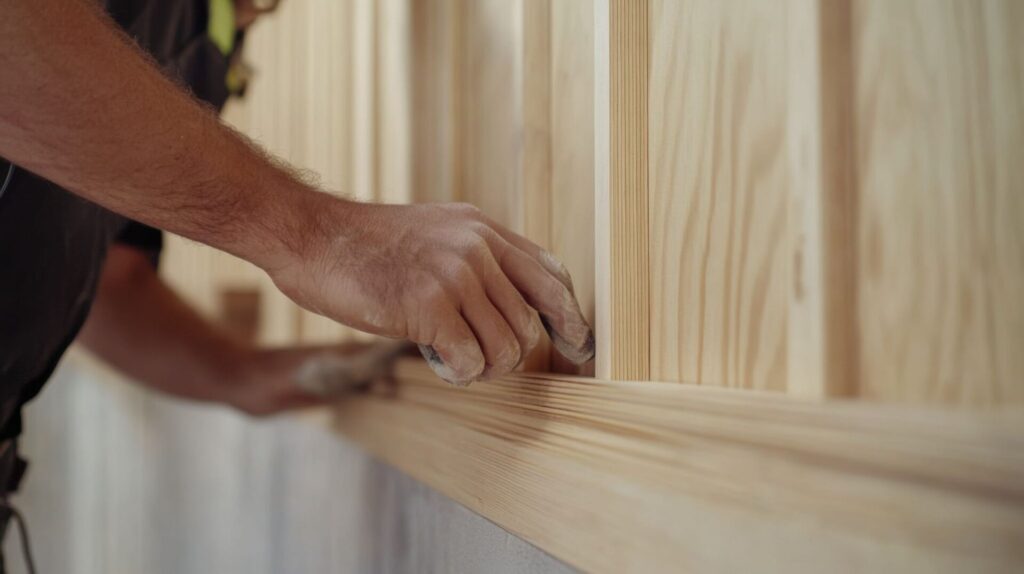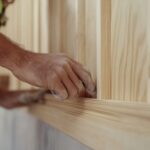
Interior trim is the unsung hero of home design. It’s the finishing touch that frames your space, defines its character, and elevates a basic room into a polished, intentional home. The trim you choose speaks volumes about your style. Yet, with a dizzying array of materials, profiles, and finishes available, selecting the right one can feel overwhelming. Let’s explore the key considerations when choosing interior trim to ensure your next project looks professional and reflects your unique taste.
Understanding Your Material Options
The first and most crucial step is choosing the material. This decision impacts the aesthetics, durability, cost, and ease of installation of your trim. Each material has its own strengths and ideal applications.
For those tackling a project and seeking detailed guidance on installation techniques and material preparation, the expert resources at Bradley.build offer invaluable insights for a flawless finish.
1. Pine and other softwoods
This is the most common and budget-friendly option. Pine is easy to cut and shape, making it a favorite for DIYers. It takes paint beautifully, allowing for a seamless, custom look. The downside? It’s soft and prone to dents and scratches. It also requires priming and painting to hide the wood grain and prevent unsightly knots from bleeding through over time.
2. Medium-density fiberboard (MDF)
This engineered wood product is made from broken-down hardwood and softwood fibers mixed with wax and resin. Its smooth, uniform surface is perfect for a modern, painted finish, as it has no grain. It’s inexpensive and stable, meaning it won’t warp or expand like solid wood. However, it is vulnerable to moisture (swelling and crumbling if it gets wet) and cannot hold a sharp, detailed profile, unlike wood in some cases.
3. Hardwoods
If you’re looking for durability and the ability to showcase a beautiful natural grain, hardwoods are the way to go. Poplar is a popular choice as it’s relatively affordable, stable, and takes paint well. Oak and maple are tougher and are typically stained to highlight their distinctive patterns. Hardwoods are more expensive and can be harder to work with, requiring sharper tools and more skill.
4. Polyvinyl chloride (PVC) and synthetic trim
PVC trim is a champion for kitchen areas, bathrooms, and basements. It’s completely waterproof, rot-proof, and insect-proof. It’s also lightweight and easy to cut. While it can be painted, its synthetic appearance can be a giveaway, and it may not hold as crisp a detail as wood or MDF.
5. Polyurethane
This material is the king of ornate, detailed moldings. Polyurethane trim is lightweight, easy to install, and resistant to moisture and insects. It comes in incredible pre-formed designs for crown molding, ceiling medallions, and corbels that would be prohibitively expensive to carve from wood. It must be painted and is not as impact resistant as wood.
Matching Trim to Your Design Aesthetic
Your trim should be a cohesive part of your overall design language. The profile and scale you select can dramatically alter a room’s feel.
1. Modern or contemporary
Clean lines are key. Think simple, flat stock trim, shaker-style profiles, or even minimal reveals without traditional trim. The focus is on creating shadow lines and crisp transitions. A smaller, sleeker profile (like a 2.5-inch baseboard) often works best.
2. Traditional or classic
This is where trim shines. Elaborate crown molding, thick baseboards (5 inches or more), and detailed door casings with plinth blocks are hallmarks. Look for profiles with curves and intricate details to add a sense of history and grandeur.
3. Transitional
This style blends traditional and modern. For example, you might see a simple, yet substantial baseboard (around 4 inches) paired with clean-lined door casings. It’s about borrowing the warmth and presence of traditional design but executing it with a cleaner, more updated hand.
4. Farmhouse or cottage
This style often uses simpler, painted wood trim. Board and batten, shiplap, and beadboard wainscoting are popular choices. The look is charming and textured rather than ornate.

Practical Considerations for a Flawless Finish
Aesthetics are important, but don’t forget the practicalities.
1. Measure your space
The scale of your trim should relate to your ceiling height and room size. Tall ceilings can handle massive crown and baseboards, while standard 8-foot ceilings are overwhelmed by anything too large. A good rule of thumb is that your baseboard should be taller in rooms with higher ceilings.
2. Consistency is king
While you can vary trim styles from room to room (e.g., more formal in the living room, simpler in the bedrooms), try to maintain consistency within open-plan areas to create a cohesive flow.
3. Finish before you install
For a truly professional look, especially with paint-grade trim like pine or MDF, finish (prime and paint) the pieces before installation. This allows you to get a smooth, factory-like coat on all sides and covers any nail holes and caulk lines with the final coat after installation. This technique saves time and creates a superior result.
Bottom Line
Choosing your interior trim and other building materials is a journey in defining your home’s character. Thoughtfully considering the material, interior design, and practical application can transform your space from ordinary to extraordinary. So, take your time, hold samples up in your space, and choose the trim that not only frames your walls but also beautifully frames your life.












